My visit to assess the potential for wych elm (Ulmus glabra) planting on land owned by the Borders Forest Trust will pave the way for a homecoming of sorts for the elms in the next month or so. The 12 parent trees used for breeding by the Scottish Plant Recovery team were selected with care and consideration for their apparent resilience to Dutch elm Disease. Nearly all the ‘survivor’ trees were found in the Scottish Borders in the summer of 2022 with the help of the public. The trees had to pass stringent selection criteria, being a minimum of 2 m in girth and growing near evidence of past or ongoing disease. Their survival, over almost 50 years of disease, arriving in waves every few years, is what marks them out as different from nearly all other elms. I have described the process of using this genetic resource for breeding in an earlier post: Next gen elms.
On 17 February, as snow is falling, I’m driving down to the Borders for two site meetings. The first stop is Corehead, a site just north of Moffat, with Adrian Kershaw. At the start of the Scottish Plant Recovery project both Corehead and another site called Gameshope, a valley upstream from the Talla Reservoir, were visited as potential sites for translocation of various threatened plants. Last spring Gameshope had a trial planting of 33 elms from the first round of breeding in 2023. A much larger batch of 2,500 seedlings, produced in 2024, are now due to be planted in March and April 2025.
During the drive up the valley to meet Adrian it becomes clear that this area is prime elm country. There are elms everywhere, although none of any size. Nearly all the big trees have been killed by disease and what has replaced them is regeneration from seed. This means the elm is not lost, but the habitat of old elms is, and this has knock on consequences for species that need old elms, such as certain lichens. Unfortunately, the young elms seem to consistently succumb to subsequent waves of disease. It seems they inherit the susceptibility of their parents, and nearly all elms have turned out to be susceptible. This pattern explains the need to control the elm breeding process and use only selected, promising parents.
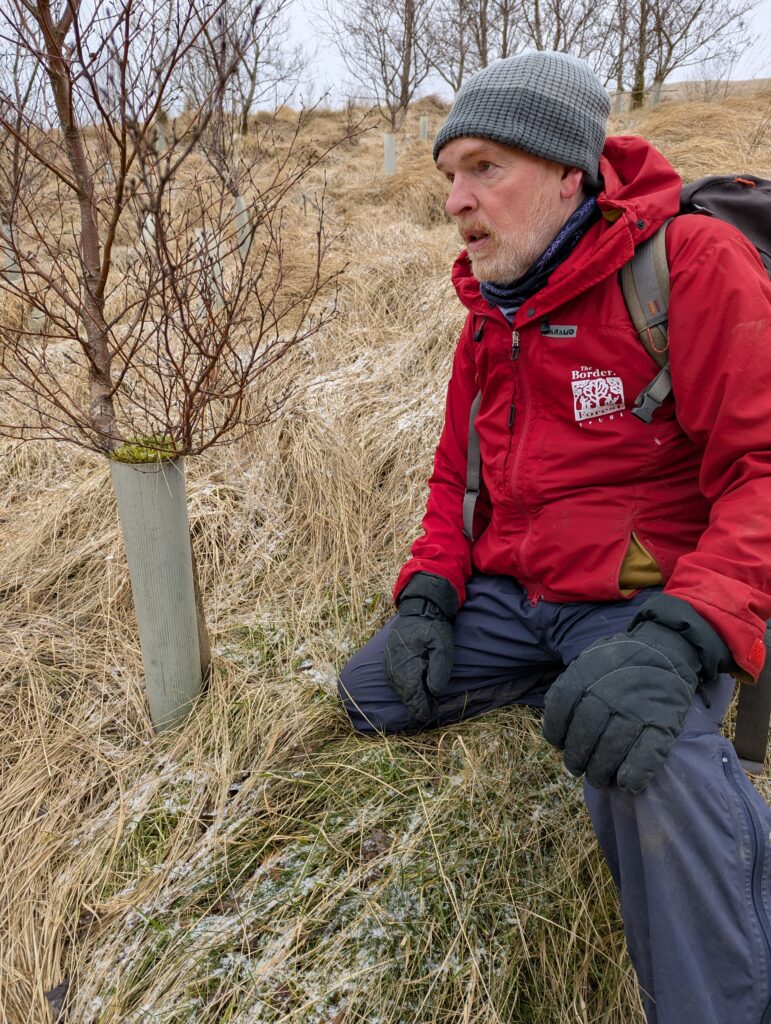
As Adrian and I explore the site it is obvious it has great potential for elm. Large elms have survived in one spot, although they sustained serious damage from horses stripping their bark during the process of removing grazing animals as the Trust took over management of the land. The horses are long gone, and we agreed that a few elms will be planted alongside the big trees. It felt like an appropriate action in response to the accidental damage. Nearby, an ancient ash (Fraxinus excelsior) stands in former grazing land on good, fertile soil that will suit elm well.
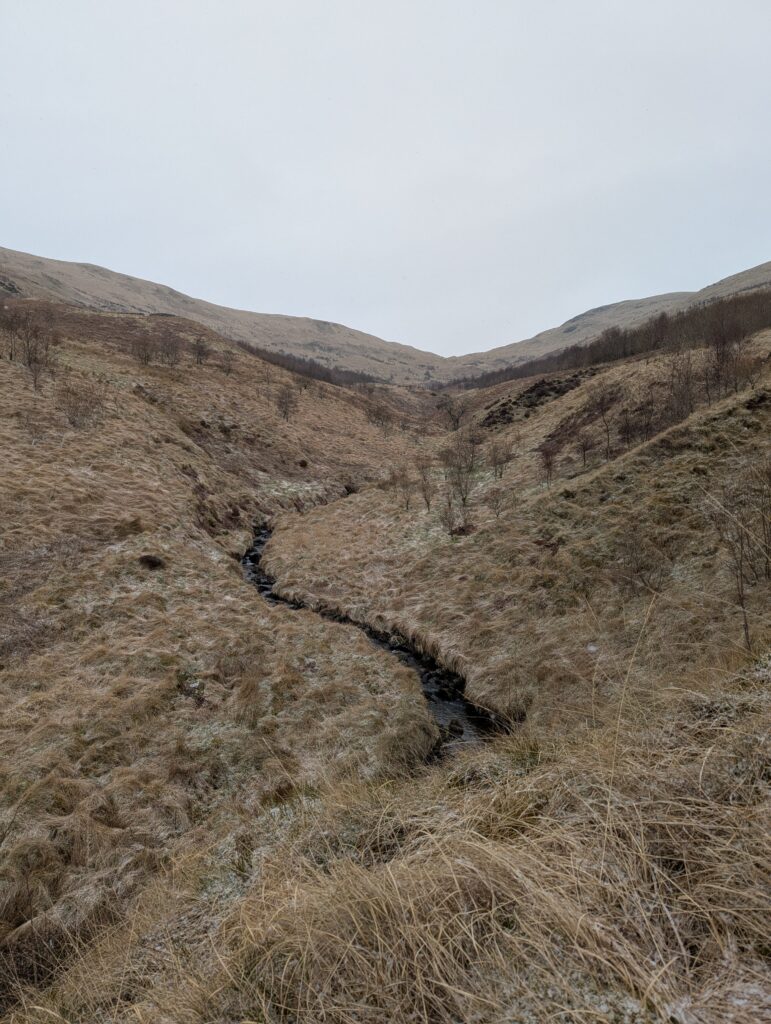
However, the opportunity for planting that we both find most exciting is along the course of the Tweedhope Burn. The requirements of past forestry grant schemes prevented the Trust from planting next to the burn. This rule is nonsensical in relation to native woodland planting as trees naturally grow to the bank of any waterbody. The shade they cast cools the water, and the leaves act as a food source for aquatic life, so there is a dual benefit to the ecology of the burn. Planting elms in this burnside position is also appropriate for the trees themselves as elms often grow near mountain burns and on the valley slopes and fertile floodplains of rivers. This feels like putting back a missing piece of the jigsaw puzzle. The value of so-called riparian woodland – woodland beside streams and rivers – has been explored in two recent posts: Restoring salmon elms in Caithness and Restoring nature at Balmoral.
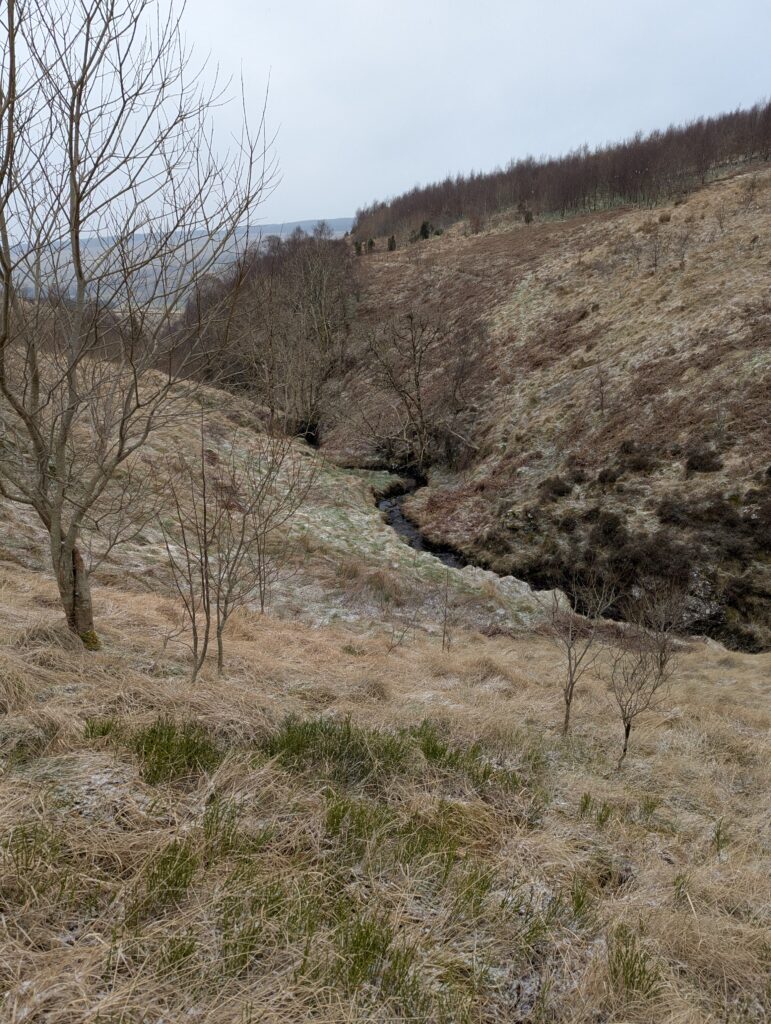
The scale of woodland restoration being conducted by the Trust is awe-inspiring. Our few hundred elms are a drop in the ocean of the millions of trees planted so far. Adrian talks a lot about tree tubes and vole guards, and I begin to appreciate that the cost of removal of these important forms of protection for young trees is enormous. The Trust is experimenting with various biodegradable products, but all of these are new and untested. At present, the weekly volunteer parties often spend time removing plastic tree protection ready for recycling. The shed has become a recycling hub, and a vast pile of tree tubes is awaiting collection. There are over 500 volunteers on the books, and volunteer tasks run every week all year round. The restoration of what the Trust calls The Wild Heart of Scotland is clearly rooted in the community and there is a real sense of nature and the land being seen as the commonwealth – the common well-being – of the people who live here.
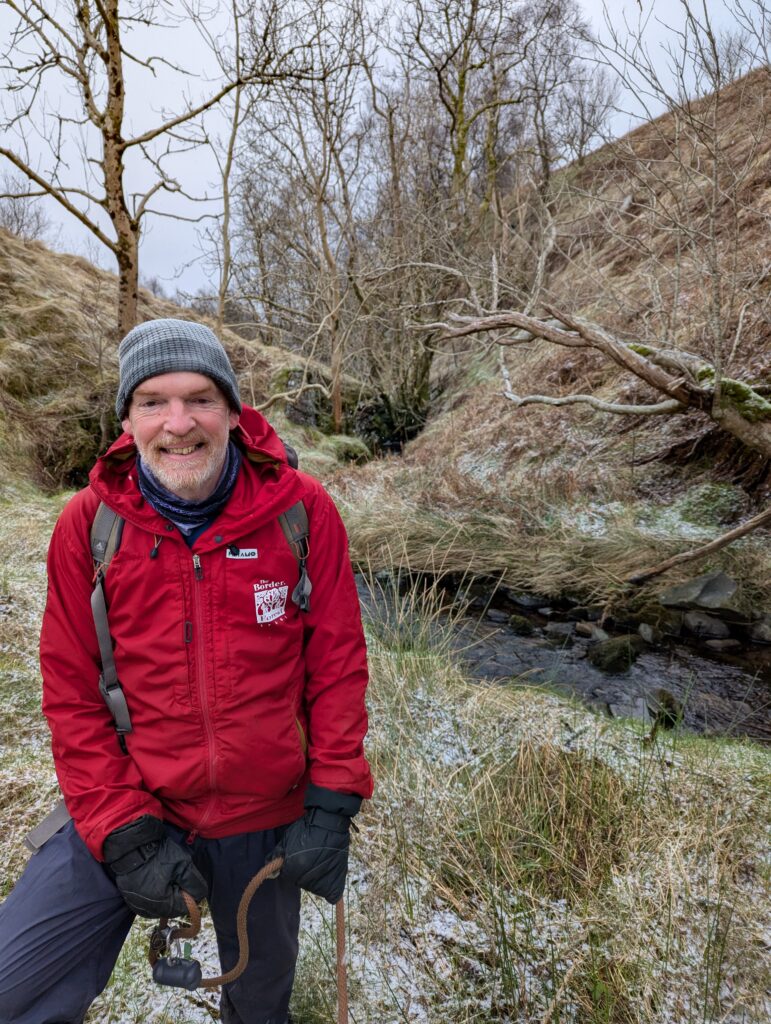
Having agreed three places for elms and a further planting spot for crab apple (Malus sylvestris) in an area being developed as scrub, I say goodbye to Adrian and head to Gameshope to meet Andy Wilson. Andy and his border collie, Cass, greet me at the car park, and we walk into the Gameshope valley. It’s interesting to see this site within an hour of leaving Corehead as it strikes me how it feels a much harsher environment for trees. The soil is thinner and more stoney with less nutrients. Consequently, only those trees adapted to higher ground with more exposure and poorer growing conditions will be likely to succeed. Elm is a tough tree, but this is clearly a less suitable site for elms than Corehead. We locate four of last year’s trees and all are in good health, but their growth has been slow. They have only increased in height by about 10 cm. This modest growth is nothing compared to the 1.5 m of growth last year by one of our elms from the same batch planted at Beauly Priory to replace a much-loved ancient elm that was lost to disease. It’s an unfair comparison to make as the Beauly tree is on rich, alluvial floodplain soils.
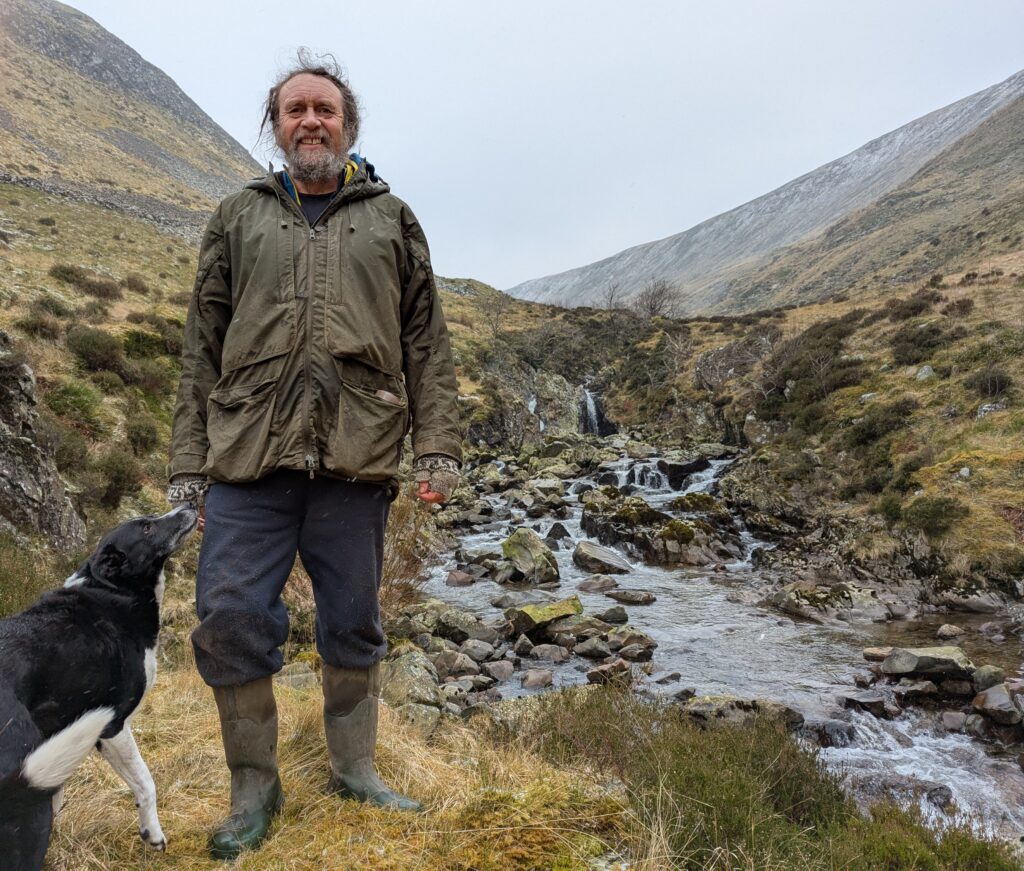
Andy agrees that the 200 elms allocated to Gameshope should be cut back and the trees used instead at Corehead, where they will be easier to plant and will grow better. However, some additional elms will be slotted into gaps above and below the popular swimming pool on the Games Hope Burn, very near to the planting done last year. We also identify some additional planting opportunities. Near to the wooden footbridge across the burn, just downstream from the car park, there are patches of flatter ground above and below the bridge. Also, a minor tributary, appropriately called Wych Lynn, has an attractive waterfall with grassy banks suitable for a few elms. Some flat ground close to the start of the reservoir and along a fence at the foot of a slope provides further opportunities for both elm and apple.
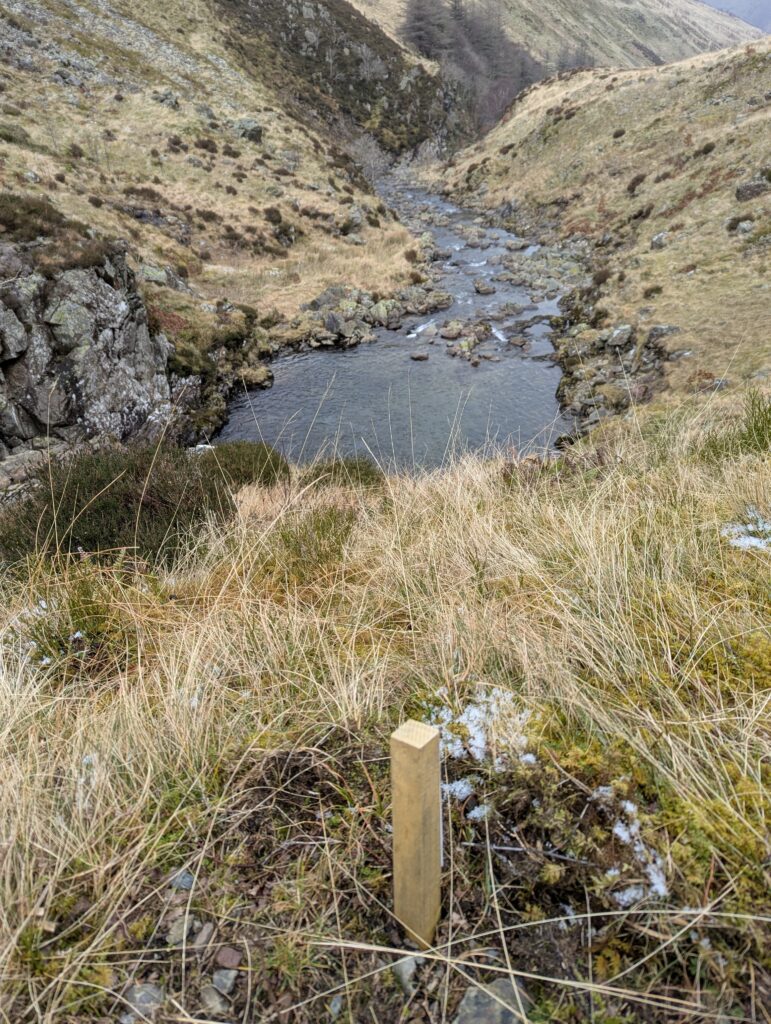
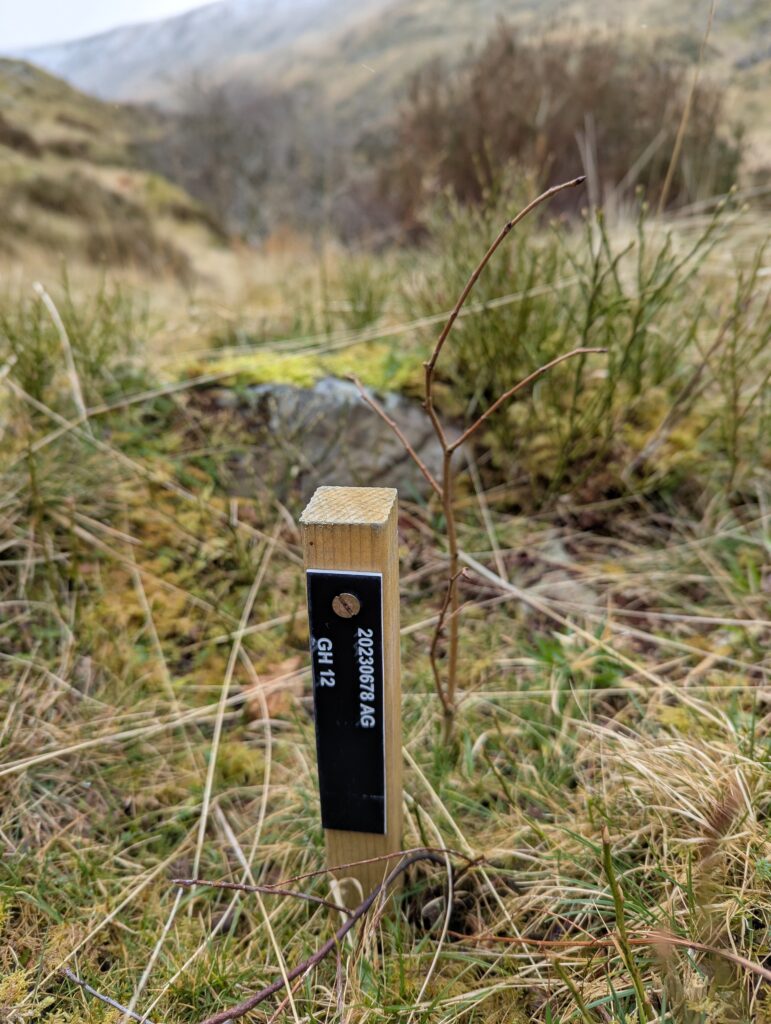
As we discuss the transformation happening at Gameshope Andy explains the need to restore key missing animals that engineer the landscape or help maintain grazing animals in balance with the carrying capacity of the land by acting as predators. His enthusiasm is infectious as he revels in the return of golden eagles (Aquila Chrysaetos) to the area. Multiple pairs have established territories, and the first chicks may not be far off. Apparently, it usually takes the inexperienced young birds a few attempts before they succeed. The beaver is Andy’s dream as they would help to manage water flow by slowing the transit of water in times of flood. We talk about whether the return of the wolf (Canis lupus) is something we will see in our lifetimes. Researchers at the University of Leeds have just published a paper about the potential for wolves to be restored to the Cairngorms. Andy thinks that the lynx (Lynx lynx) is a much more realistic option for deer control.
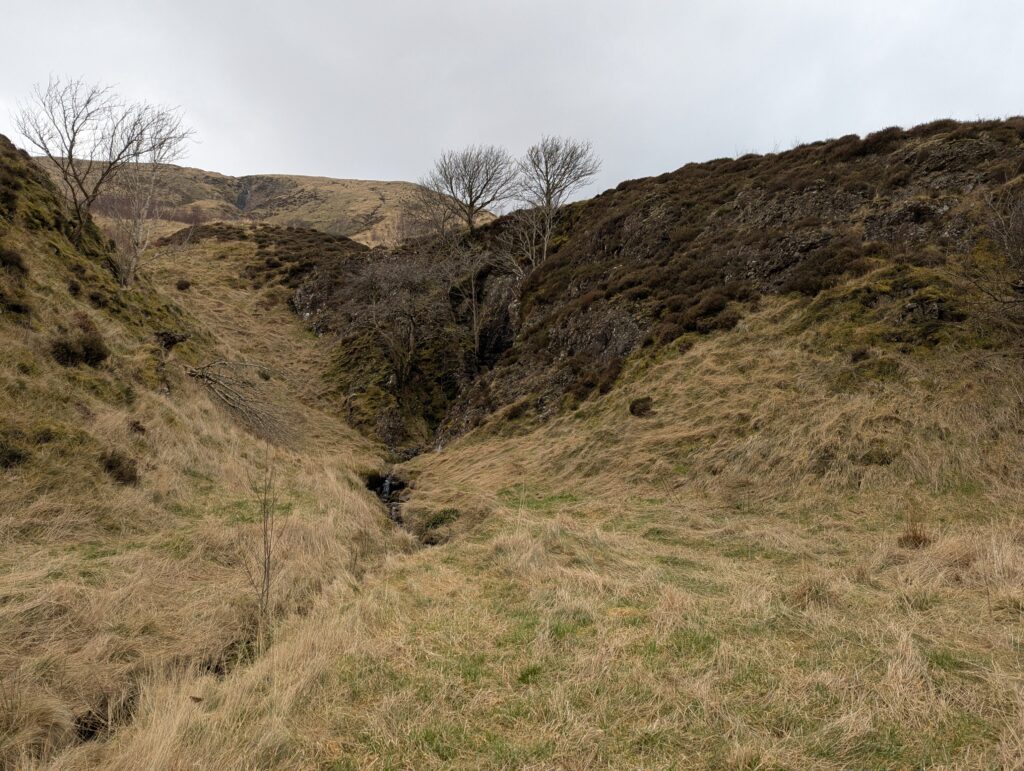
In many ways the land owned by the Trust at these two sites is perfect for the Garden’s plant species recovery work. The removal of domesticated livestock and the coordinated stalking of wild deer across these large areas means that grazing pressure is low enough to allow natural regeneration of trees and other plants. The evidence that deer numbers are very low on the Trust’s land is seen in impressive natural regeneration of rowan (Sorbus aucuparia) at Gameshope. Andy sees planting as augmenting the early colonising trees and speeding up the process of ecological recovery.
Andy points out that ‘these hills have been devoid of trees for so long we need to remember that even the microbial community within the soil needs to change’ as the vegetation changes from grassland and moorland to woodland. In time, the planted trees, including the new addition of elms and apples, will be able to reproduce and colonise suitable habitat as truly wild plants.
… these hills have been devoid of trees for so long we need to remember that even the microbial community within the soil needs to change …
A highpoint of our walk is discovering a patch of aspen (Populus tremula) that is throwing up new suckers from the roots and expanding to form a new aspen wood on rocks above the burn. This is the natural habit of aspen but is only possible when grazing pressure is low. For centuries the old aspens clung to the cliff, out of reach of sheep and deer, waiting for the time when their suckers could grow.
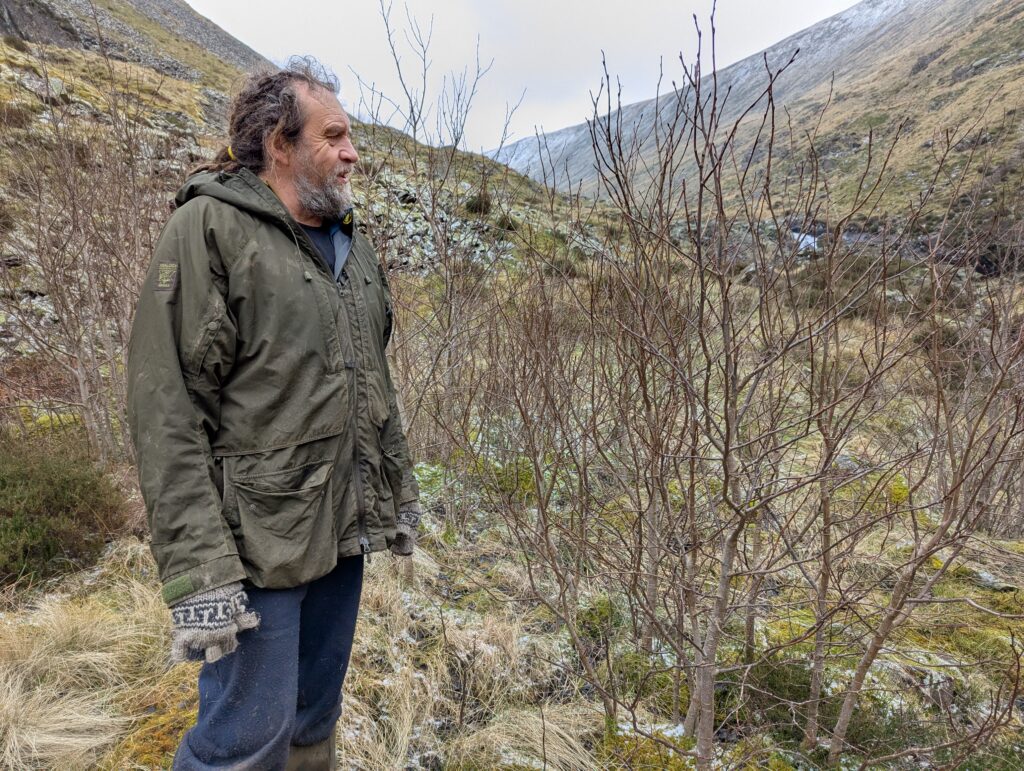
I leave inspired by Andy’s excitement at seeing the positive change at Gameshope. The Trust’s experience at other sites shows the speed of tree establishment makes it possible to create the beginnings of a functioning woodland ecosystem in as little as 25 years. Those visiting Gameshope and Corehead in 100 years will find havens of wildlife, hopefully including elms and apples, and perhaps a natural predator of the deer. That’s a thought to make the heart beat.
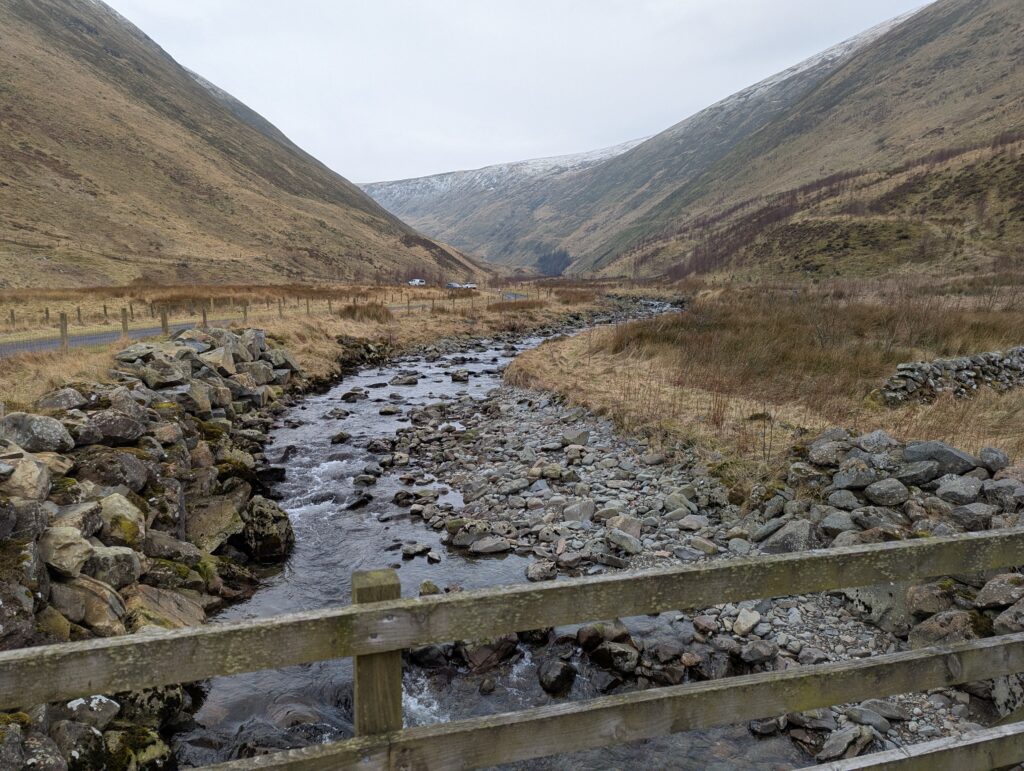


- X @TheBotanics
- X @nature_scot
- X and Facebook @ScotGovNetZero
- Facebook @NatureScot
- #NatureRestorationFund
